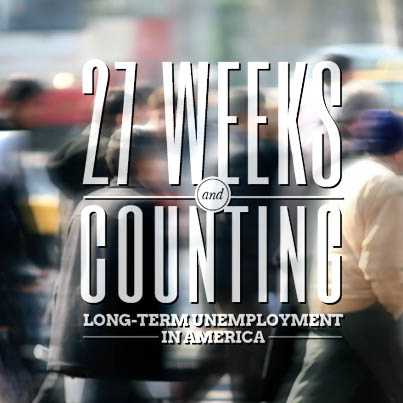
The Urban Institute convened a roundtable discussion on September 23 to explore options for dealing with the challenges posed by long-term unemployment, documented in recent research. We discussed the magnitude and causes of the current crisis, what policies have mitigated current problems, and options for future approaches.
Many participants suggested that the public does not fully appreciate the shocking level of long-term unemployment. Also not widely appreciated is how the actions of state and local governments offset some of the mitigating effects of federal stimulus spending, leaving the total government response relatively modest compared with the size of the economic shock. In prior recessions, employment by federal, state, and local governments served as a stabilizing force in the labor market; government job losses exacerbated the employment decline from 2006 to 2012.

A recurring theme was the exposure of some types of workers to excess risk, especially older workers who have more trouble returning to work after a job loss and the larger number of women in the labor force than in past recessions. The increasing fraction of people out of the labor force is worrisome, though there is some evidence that the increase is due to lower entry (and re-entry) rates rather than higher exit rates. Expanded unemployment benefits may have forestalled labor market exits, and some disability claims. Some cautioned that low participation of younger workers poses particular challenges to future labor market performance.
What drove the huge employment losses after the recession?
Participants agreed that the enormous employment losses in late 2008 and early 2009 were driven by a precipitous drop in demand for labor, and the persistent low demand has led to unprecedentedly-high rates of long-term unemployment. Though long-term unemployment has fallen from its peak in April 2010, it is still above its previous postwar high attained in March 1983.
Part of this change in demand came in the sea change of employer behavior. In past recessions, productivity fell as employers “hoarded labor” and failed to fire employees in order to avoid the cost of rehiring them when demand rose again. In contrast, measured productivity actually rose in the Great Recession, suggesting employers actually over-reacted by firing more workers than made sense on business grounds alone. Several participants suggested that inflexible labor arrangements produce a pattern of employers waiting for a downturn to clean house, front-loading employment losses in a recession and exacerbating the downstroke of the business cycle.
How should we address long-term unemployment?
Participants pointed out that many new policies were already deployed, though we needed to do more to limit employment losses at state and local levels. Participants noted that permanent changes were made to the Unemployment Insurance system (UI) as part of UI modernization and Short Time Compensation (which allows UI funds to be used to encourage hours reductions rather than layoffs) has been extended to many states. Subsidized jobs programs implemented as part of emergency TANF funding were widely regarded as a success, though they were short-lived.
Several participants expressed doubt that any of the new policies discussed had the large effects needed to reverse the unprecedented employment losses, and nothing but faster economic growth would correct the long-term unemployment problem.
Still, the food assistance and unemployment systems were seen as having largely worked to stabilize the economy, together with a variety of interventions undertaken in 2008, 2009, and 2010 to forestall far worse consequences. When participants talked of what might have occurred in the absence of temporary tax cuts, expanded food assistance and unemployment benefits, and actions by Treasury and Federal Reserve banks, they broadly and somberly agreed that we had averted catastrophe. Nevertheless, some participants expressed concern over the cost of those interventions relative to the health of the labor market today.
The Rockefeller Foundation funded much of this research, and sponsored the roundtable. We greatly appreciate the support.
Let’s build a future where everyone, everywhere has the opportunity and power to thrive
Urban is more determined than ever to partner with changemakers to unlock opportunities that give people across the country a fair shot at reaching their fullest potential. Invest in Urban to power this type of work.